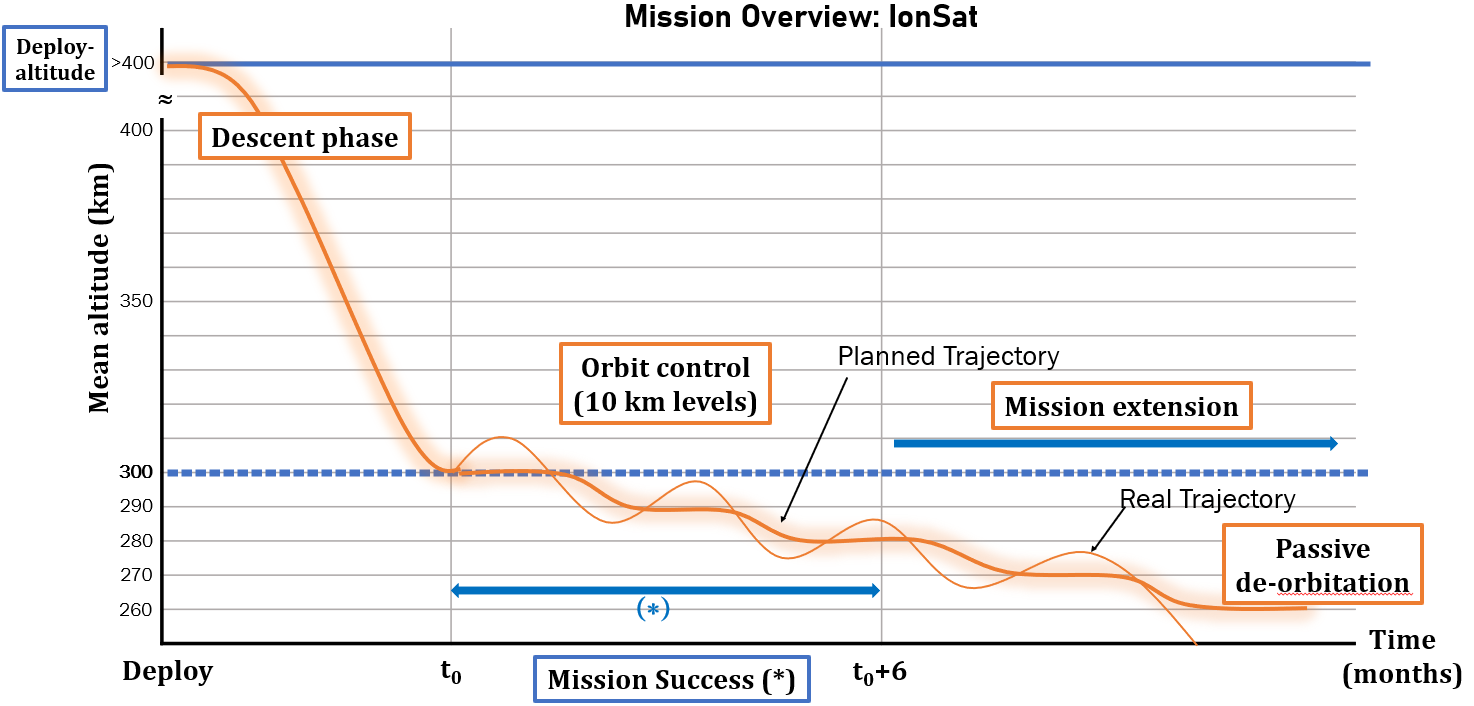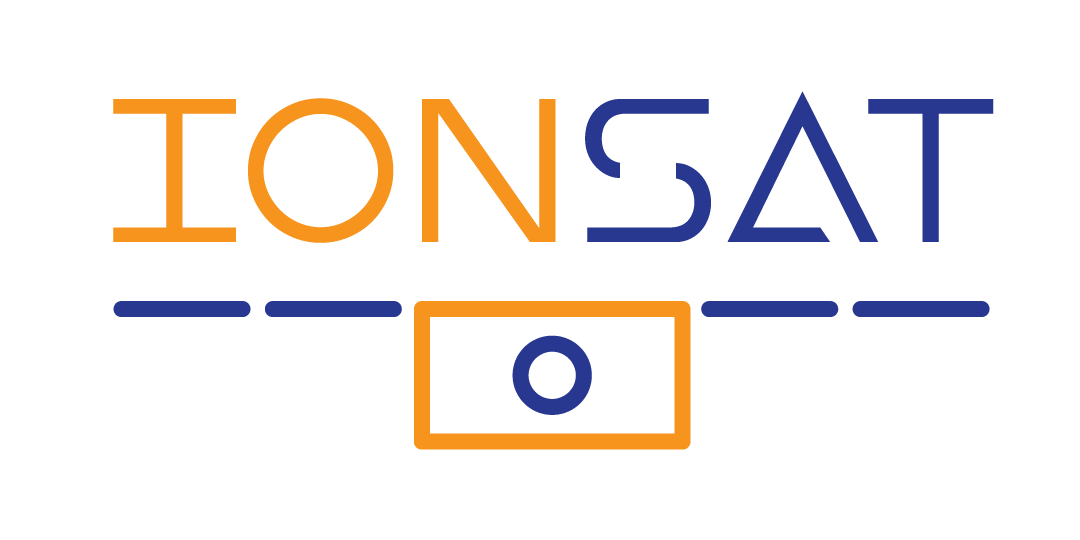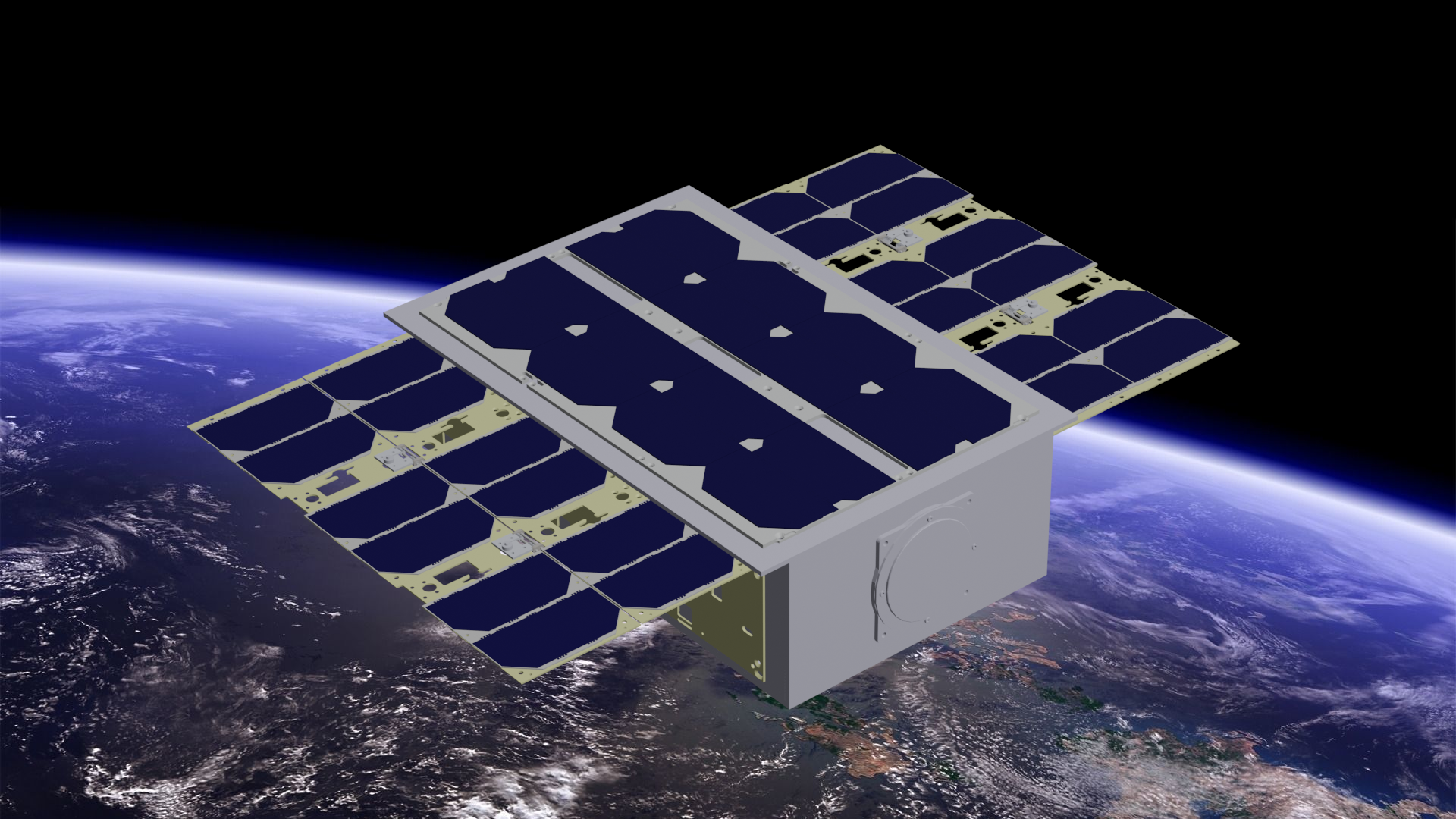IonSat is a propelled nanosatellite developed by students at the Ecole Polytechnique.
Latest news
The latest news is available on the newsletter!
In a nutshell
| Partners | École polytechnique, ThrustMe, CNES, Thales Alenia Space |
|---|---|
| Size | 6U (10x20x30 cm) |
| Number of students | 54 |
| Launch estimated | 2024 |
| Initial orbit | 300 km |
| Mission duration | Minimum 12 months |
| Total estimated budget 1.4 M€ |
Very low orbit station keeping
The project aims to design, place and maintain a powered nanosatellite in low orbit. It is part of a growing interest in very low orbits, for their many advantages (reduced communication latency, better resolution, lower launch costs, etc.).
The satellite would be launched from the ISS and would descend to an altitude of 300 km. This descent is based on the aerobreaking technique, which consists of using atmospheric drag to slow down the satellite, by orienting the largest surface perpendicular to the trajectory to maximise the drag force.
Once at 300km altitude, the station-keeping mission begins. At regular intervals, the nanosatellite will begin a descent phase to reach a lower altitude of 10km. The flight will therefore be carried out in stages for a desired duration of 6 months: the mission will be extended in case of success.

Illustration of the planned mission plan for IonSat: representation of the average altitude in orbit as a function of time. The mission is considered a success after 6 months of station keeping, i.e. about three steps.
All-electric platform
The propulsion system used is an NPT30-I2 ion engine supplied by ThrustMe. It operates with a power of up to 60W, which is very high for a nanosatellite the size of IonSat.
Managing to provide the necessary power is therefore a real challenge, which requires a precise study of the energy recovery capabilities of the solar panels, coupled with the use of the battery. It is also necessary to understand the consequences of such energy consumption, particularly from a thermal point of view: this requires a good capacity to evacuate the heat to avoid the malfunctioning of the components.
Join us
We offer different internships throughout the year. More information on the dedicated page
Communications
Scientific papers
The Ionsat project has been the subject of a few papers by students at international conferences:
International Astronautical Congress (IAC) 2020 IonSat: a student nanosat with an iodine thruster in very low earth orbit. See the associated paper . See the presentation (Access restricted to IAC 2020 participants)
International Astronautical Congress (IAC) 2019 Fitting a high total impulse electric propulsion system in a student CubeSat to compensate the atmospheric drag in low-earth orbit. See related article.
International Astronautical Congress (IAC) 2018 IonSat: challenging the atmospheric drag with a 6U nanosatellite. See related article.
7th Interplanetary CubeSat Workshop 2018 IONSAT: Challenging the atmospheric drag with a 6U nanosatellite. See presentation material
General communications
- External communication December 2020: the first newsletter.


